Breakthrough aircraft to transform remote mining
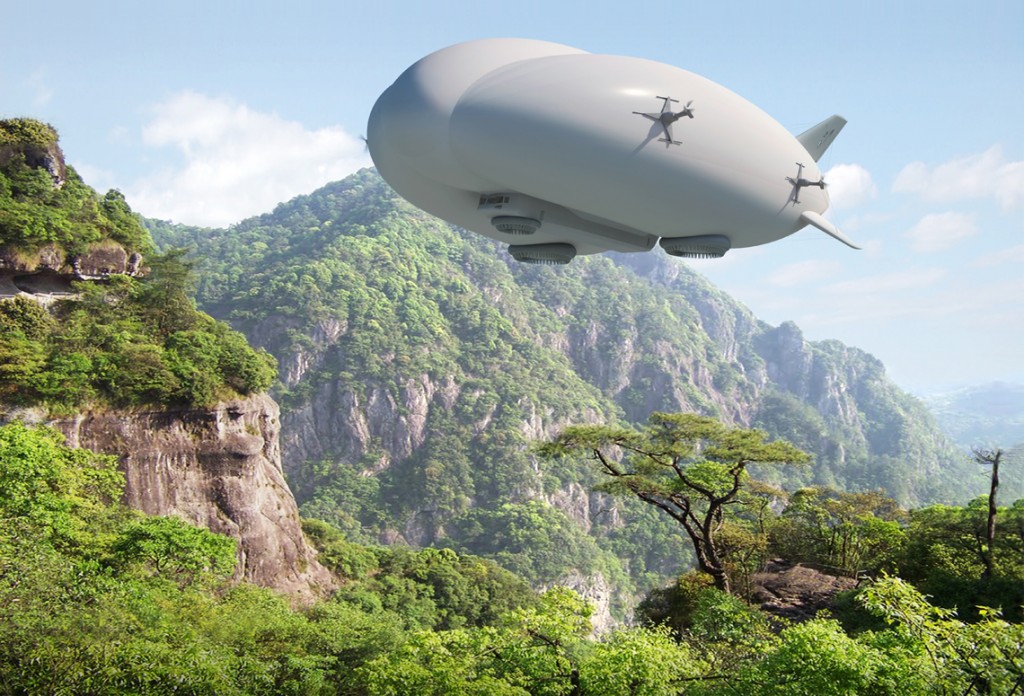
On Wednesday, Lockheed Martin signed the first customer for the LMH-1, the giant defense contractor’s hybrid airship. The LMH-1 is a unique new aircraft which is part helium dirigible, part cargo helicopter, part passenger airliner and part hovercraft.
UK-based Straightline Aviation signed a letter of intent with Hybrid Enterprises, the exclusive reseller of the hybrid airship, to purchase up to 12 aircraft with a potential value of roughly $480 million.
When the new aircraft enters commercial service in around three years’ time it would not just be an upgrade to the traditional airship or advertising blimp, but would constitute a whole new class of aircraft says Bob Boyd, program manager for hybrid airships at Lockheed Martin: “It’s a new opportunity, we’re not competing with any other aircraft.”
“It’s a new opportunity, we’re not competing with any other aircraft”
Straightline Aviation is the world’s largest airship company and operates in 30 countries. Chief and co-founder, Michael Kendrick tells MINING.com that the company would own and operate the aircraft: “We see pent-up demand in the mining and oil and gas industries and expect our first customers from this sector.”
MINING.com recently toured Lockheed’s Skunk Works in Palmdale California where work on hybrid airship technology began more than two decades ago under a classified military program that never got off the ground (nothing except an early prototype to be more precise).
But Skunk Works never abandoned the project, spending around $100 million on research and development on a highly modified version of the original concept. The LMH-1 is now the first commercial venture to come out of the 3,000-staff facility responsible for such iconic flying machines as the SR-71 Blackbird (40 years later still the world’s fastest jet) and stealth attack jet the F-117 Nighthawk.
We were not allowed to have cellphones on the premises or take photographs of facilities, but Skunk Works (click here if you’re curious about the origins of the name) security allowed me to keep this one (that’s a real Nighthawk in this picture btw):
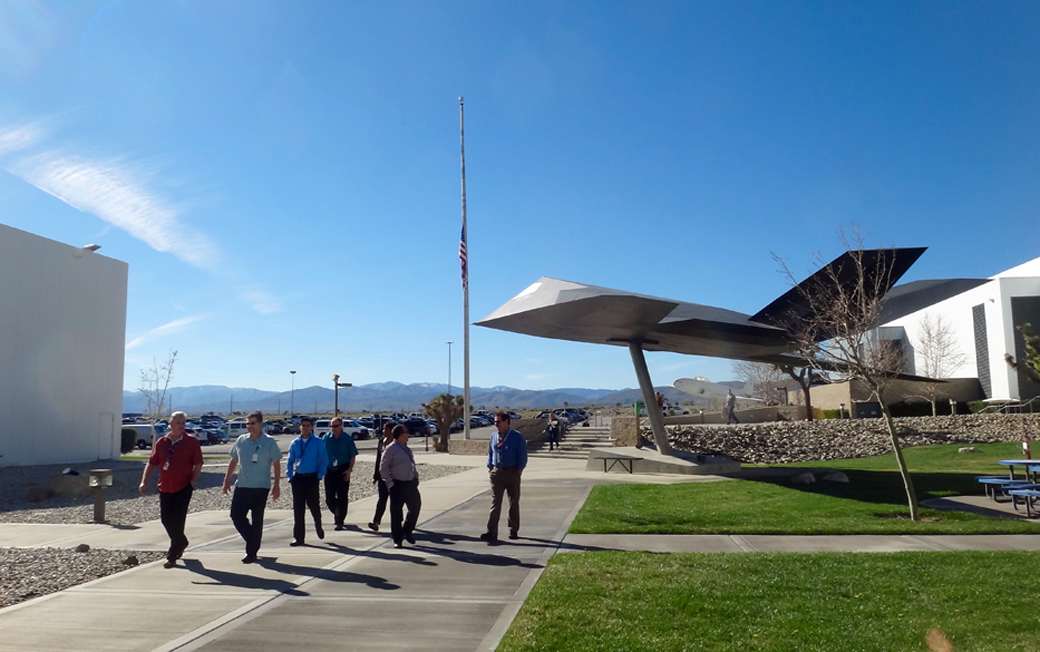
Source: MINING.com
What makes the LMH-1 a hybrid and distinct from traditional airships is the tri-lobe hull that combines the direct lift of a helicopter and the aerodynamic lift of a fixed wing aircraft with the buoyant lift of an airship. The helium-filled envelope provides 80% of the lift because the LMH-1, unlike other blimps, is heaver than air (and therefore requires no mooring).
The landing gear acts as three giant suction cups making it possible to land on ice, snow, mud, sand and water
What sets the LMH-1 apart from competing designs is its hovering and landing capabilities or what Lockheed calls its Air Cushion Landing System or ACLS. By reversing the air-flow the landing gear acts as three giant suction cups and make it possible to land on and grip any unimproved field including ice, snow, mud, sand and water.
Boyd says because the aircraft is such a unique proposition Lockheed spent time talking to mining and exploration companies to understand their requirements and explain how the hybrid airship could fulfil those needs.
With rich easily-reachable deposits being depleted, mining and exploration is pushing further and further into frontier markets and remote locations. Says Boyd: “Not only will the LMH-1 lower construction costs by reducing the need to build transport infrastructure, the low environmental impact would also lower clean-up costs at remote sites.”
Mining is water intensive and many mines are located near bodies of water meaning many operations can utilize hybrid airships without creating any new infrastructure.
Pictured below is the prototype version of LMH-1 named the P-791 (notice it has four landing cushions) which undertook its first flight more than 10 years ago.
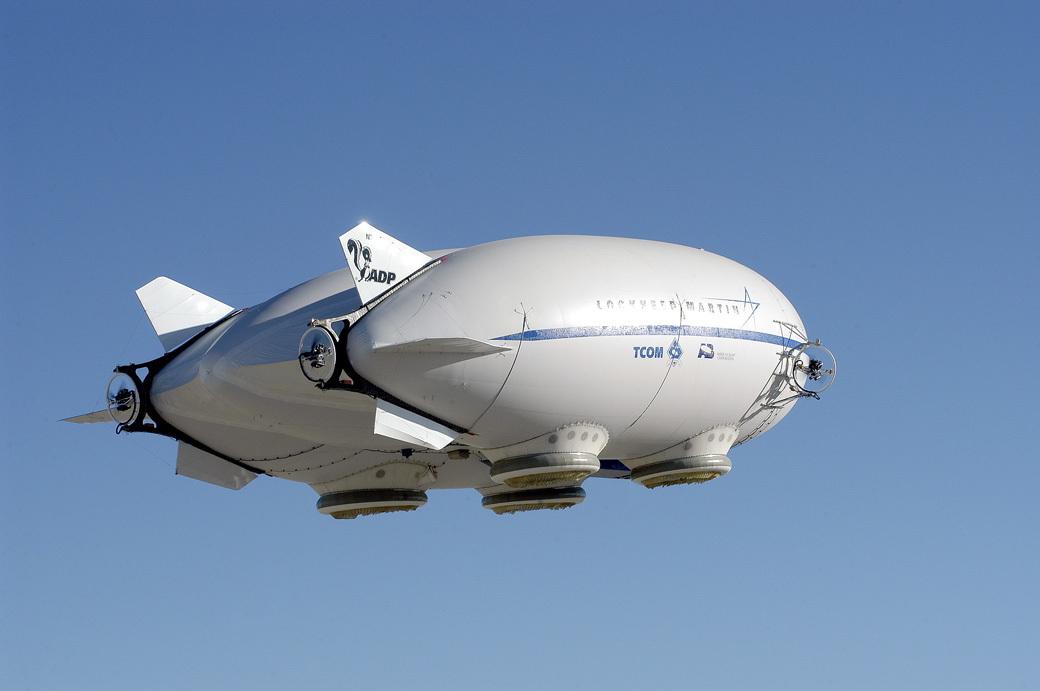
P-791’s first flight was in January 2006. Image: Bob Driver
With first customers signed up Lockheed will now start building the commercial version of the aircraft which will be tested for a full year before being put into service. The project received transport certification from the US Federal Aviation Administration in November after Lockheed spent a decade developing a new set of criteria in conjunction with the FAA and Transport Canada as the hybrid airships did not fit within current regulations.
The LMH-1 will be three times the size of the prototype – 300 feet (90m) long and 78 feet (24m) high. Four small side-mounted engines provide thrust vectoring propulsion and vertical take-off and landing. Cruising speed with a full load is 60 knots giving the aircraft a range of 1,400 nautical miles (1,611 miles or 2,593 kilometres).
Lockheed considers helium a structural material and the envelope is made of a material not much thicker than canvass or sail
Grant Cool, chief operating officer Hybrid Enterprises, says when you slow down to say 25 knots the impact on fuel efficiency is enormous and you could conceivably stay in the air for days and travel around the world.
Cool says he almost expects that with the LMH-1 old nautical terms like tradewinds and the doldrums may start to make a comeback. Lockheed considers the helium a structural material and the envelope is made out of a material called Vectran which is not much thicker than canvass or sail.
Cool points out that contrary to popular perception puncturing the hull won’t cause deflation. In fact even if you shoot holes in it, you probably won’t notice anything for days and patching is a straightforward process.
Lockheed gave those of us on the tour a chance to climb inside the envelope of the P-791 (it’s now filled with air not helium obviously). Inside there are are bags that automatically inflate and deflate to compensate for the helium contracting and expanding at different altitudes. It was a strange experience sitting in the dark and underscored for me just what a unique technology a hybrid airship is.

Image: Lockheed Martin
The LMH-1 will find its main application in hauling cargo and fuel to mining and oil and gas installations with little or no transport infrastructure. But with half of the world’s population with no direct access to paved road, Lockheed foresees a range of uses for the aircraft says Craig Johnston, business director for Lockheed Martin’s Skunk Works.
That includes bringing humanitarian relief during natural disasters (including configuring the crafts as “flying hospitals”), search and rescue (including at sea) transport relays, monitoring and surveying equipment and pipeline inspections.
Passenger services and particularly tourist travel is well suited to the LMH-1 thanks to its ability to fly low, slow and, importantly, quietly. And of course there’s the tried and tested display advertising business too.
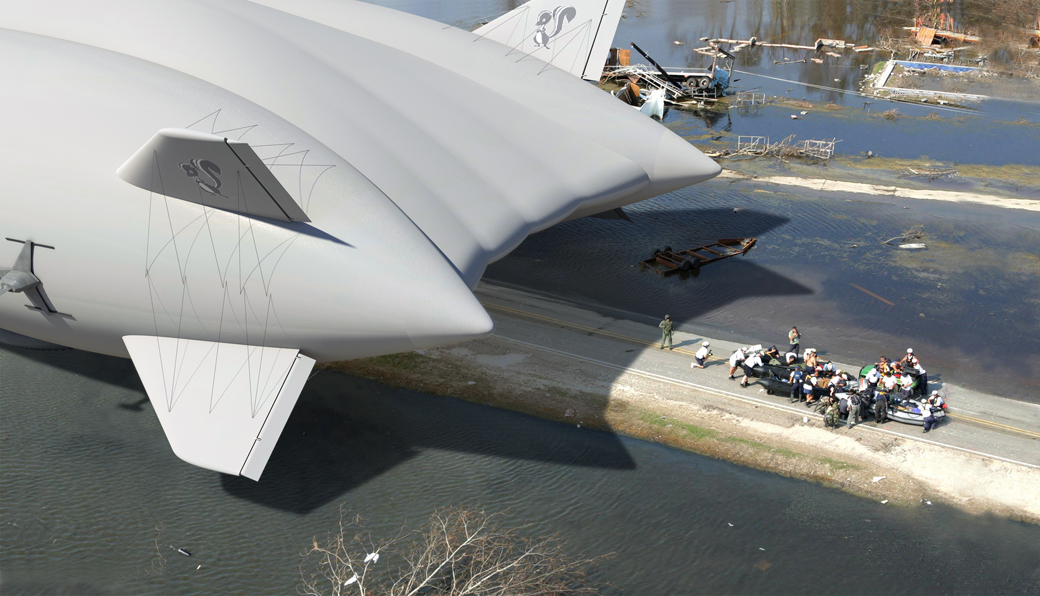
Image: Lockheed Martin
In the mining and exploration space the immediate competition for the LMH-1 are helicopters.The LMH-1 can carry up to 21 metric tonnes (more than twice maximum helicopter loads) or 47,000 pounds of payload and the roll-on roll-off cargo bay has been designed to have a similar configuration to a semi-truck at 10’x10’x60′.
What also counts in favour of the airship is the fact that it uses a fifth of the fuel of a helicopter (and a third of that of a jet aircraft) on a comparable basis and emits only 0.4kg per tonne mile CO2 compared to 1.2kg per tonne mile for jet aircraft. Keeping things simple was a main priority in the design process according to Boyd which keeps parts, maintenance and running costs low.
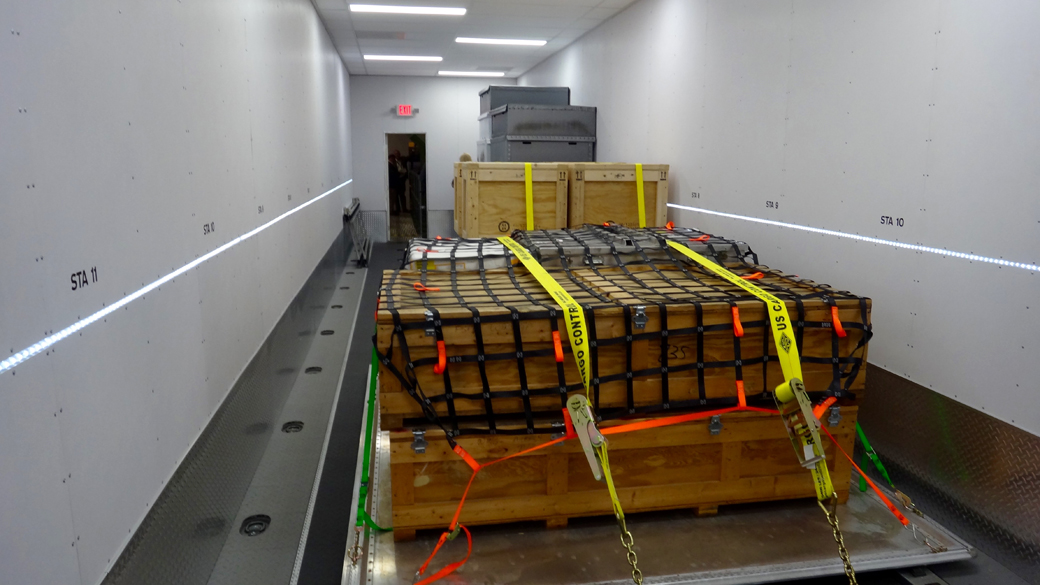
Image: MINING.com
The LMH-1 can carry up to 19 passengers and as this picture of the full-scale model of the gondola shows, can do so in “business-class style.” Noise levels at take-off and landing are well below that of jet aircraft and helicopters and Hybrid Enterprises CEO Rob Binns tells MINING.com the airship’s low environmental impact, especially how quiet it is, will see it being used in urban areas with strict noise regulations.
Landing is the most dangerous part of any flight and the LMH-1’s ability to hover and maneuver at low speeds means pilots can take their time to safely position the aircraft says Cool.
I had a chance to try steering an LHM-1 in a flight simulator. The joystick and speed controls seem really simple and straightforward and the fly-by-wire technology are based on Lockheed Martin’s advanced fighter jet flight control systems.
The LHM-1 is not without competition. Its closest rival is the UK’s Airlander and other companies are also targeting the nascent market. And neither is Lockheed Martin stopping at the LHM-1, next to come to the drawing board would be a 90 tonne payload hybrid airship to compete with jumbo jet cargo planes followed by a 500 tonne concept which would probably be the size of a sports stadium.
But forget for a moment about the transformation the aircraft will bring to the economics and logistics of remote mining and drilling or the new business opportunities it could open up.
I can see too how the Lockheed Martin Hybrid One could be a bush pilot’s dream come true.
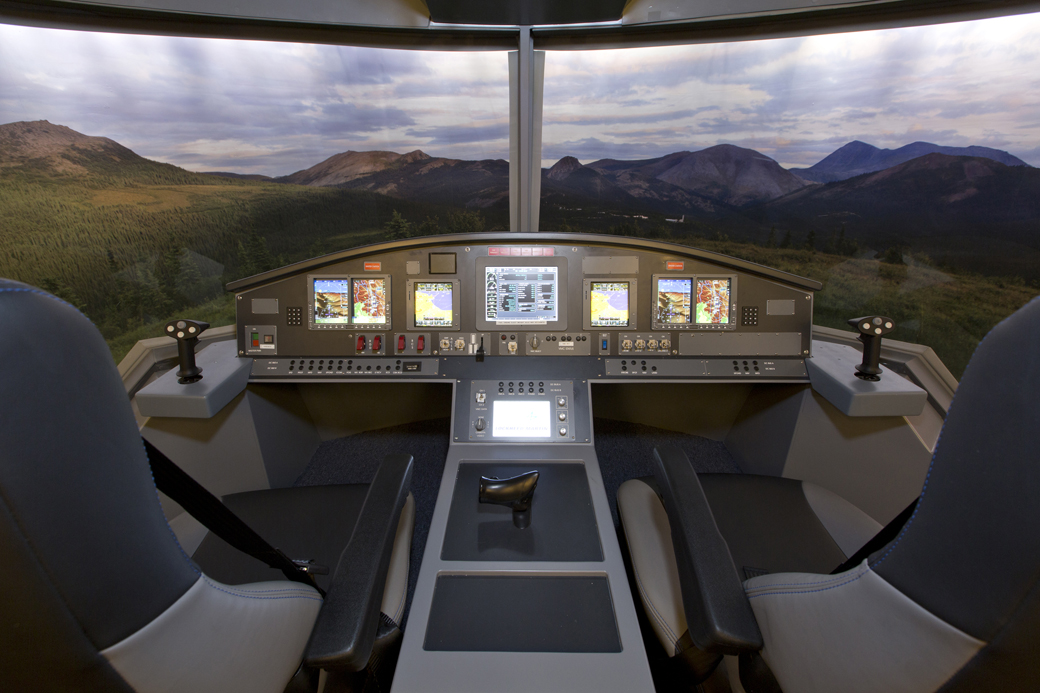
Lockheed Martin Photography By Kevin Robertson
Hybrid Airship Experience Views
{{ commodity.name }}
{{ post.title }}
{{ post.date }}




11 Comments
Chris
Semi-trucks with dimensions of 10″ x 10″ x 60″? Must one headed for that tv show, Gold Rush if its only 10 inches by 10 inches by 60 inches
MiniBulk Inc.
Amazing tech, looks like Northern Canada just got a little closer for the industry.
GreenSenior
This story does not reassure me. The hope expressed by the author that it will “open up new business opportunities”for the mining industry is quite disturbing, actually. We already know how dirty a business mining is. This will just enable it. Use these vehicles to move essential supplies like food to remote communities where ice roads are disappearing due to climate change – now THAT would get my vote!
aurizon
You live in the past. Mining has been cleaned up by strict laws – read the papers, and take into account that protesters that want bribes are hardly valid complainants.
I am concerned about the susceptibility of this craft to wind – it is low powered and can only reach a max of 60 knots – in the North of Canada we often have wind speeds of over 100 knots. Can they be tied down well enough? Can they flee the wind – or will they go tumbling over the countryside.
J_JamesM
When the weather gets really bad, these airships simply don’t operate in that area—hence the “service 340 days a year” qualifier. They certainly can and do go around storms, and sometimes even through them, just as past airships have done (though those were more akin to the contemporaneous wooden biplanes of the era than this), but that would mean they would have to expend a huge amount of fuel and time battling the storm to make headway. It just isn’t worth the trouble if they can possibly avoid it.
William
I’m just curious about how it handles weather and high wind?
GreenSenior
Guess I’ve touched a nerve, here. Would anyone like to point out any FACTUAL INACCURACIES in what I’ve said? Didn’t think so. I’ll leave you now to your own closed little world to count your money and pat each other on the back. In the meantime, please visit http://www.PlanetInPeril.ca You might get a new perspective.
wheasonjr
Green Senior, This is an improvement environmentally or would rather that mining companies continue to spend money on extensive roads and such? I would guess not unless you are one of many environmentalist that have special interest at heart, your case maybe road building in previous road less areas. I like when roads open up new areas to explore as a hobby, camp, fish, target practice, hunt, prospect with older people and what ever. This is a win I think for economic mining as well as a new industry which I hope is built in the United States.
Goldfinger
I guess Green Senior doesnt have any items in his house that use metals such as copper, aluminium or iron. He is doing these posts with smoke signals over a camp fire. I was once in a pub and a environmental nazi got gave me a lecture about mining and then pulls out their cell phone which is full of metal. The debate ended once I explained that cellphones dont work without metal and she couldnt see giving up the phone. Texting her friends every 5 minutes is more important than the planet.
Back to the Blimp. I can see these will have some applications and uses but they will be as limited. In South America I wonder how they will perform at 4500m with a 100 km per hour and minus 35 degree wind. Not as good as a truck I would guess.
corners
“I can see too how the Lockheed Martin Hybrid One could be a bush pilot’s dream come true.”
Ya, cause all those bush pilots flying sparkly new million dollar planes would find the cash for this?
Pri Inzh
Well, “dear” colleagues from Lockheed Martin, if there are no problems for hybrids so build and fly? What vain PR and Troll? There is a problem ? Pricey and slow moving glamorous fantasy hybrid … Well … Well, please, but that’s all that you offer will have to forget …
https://www.facebook.com/Fuodoroff/posts/1216026318453561?pnref=story